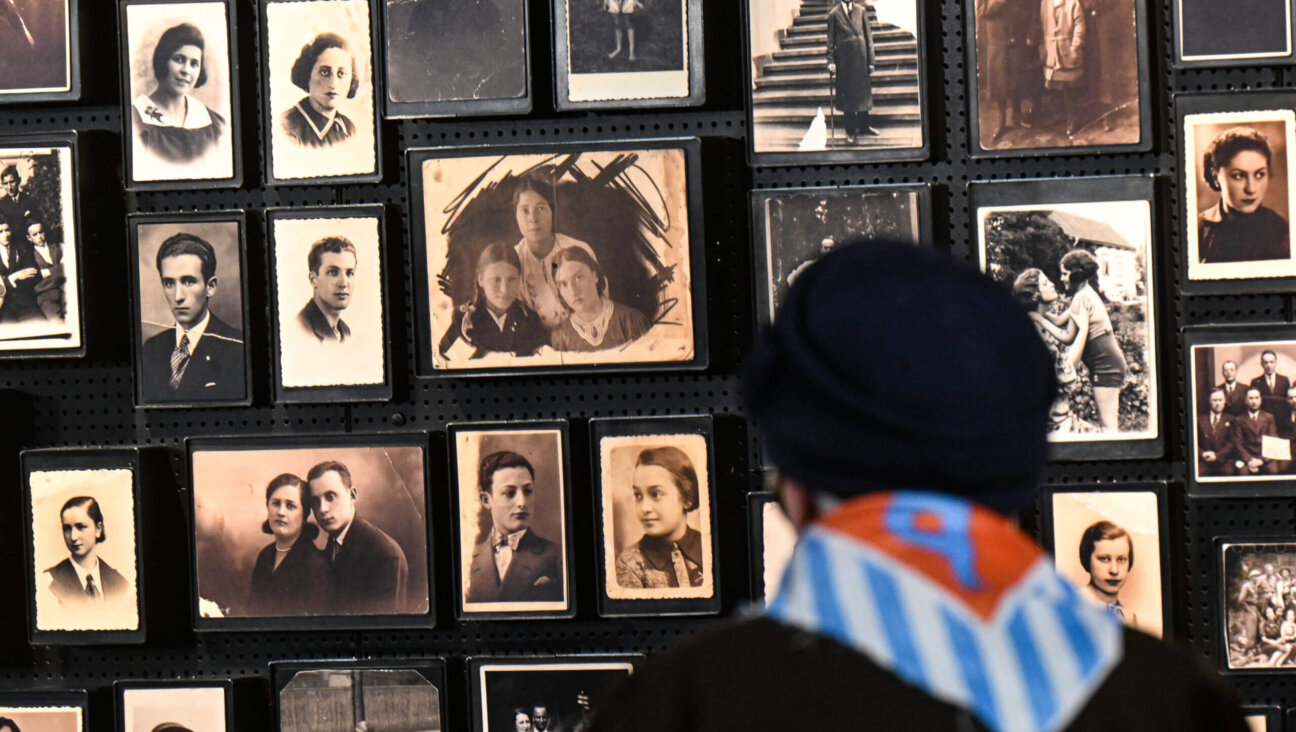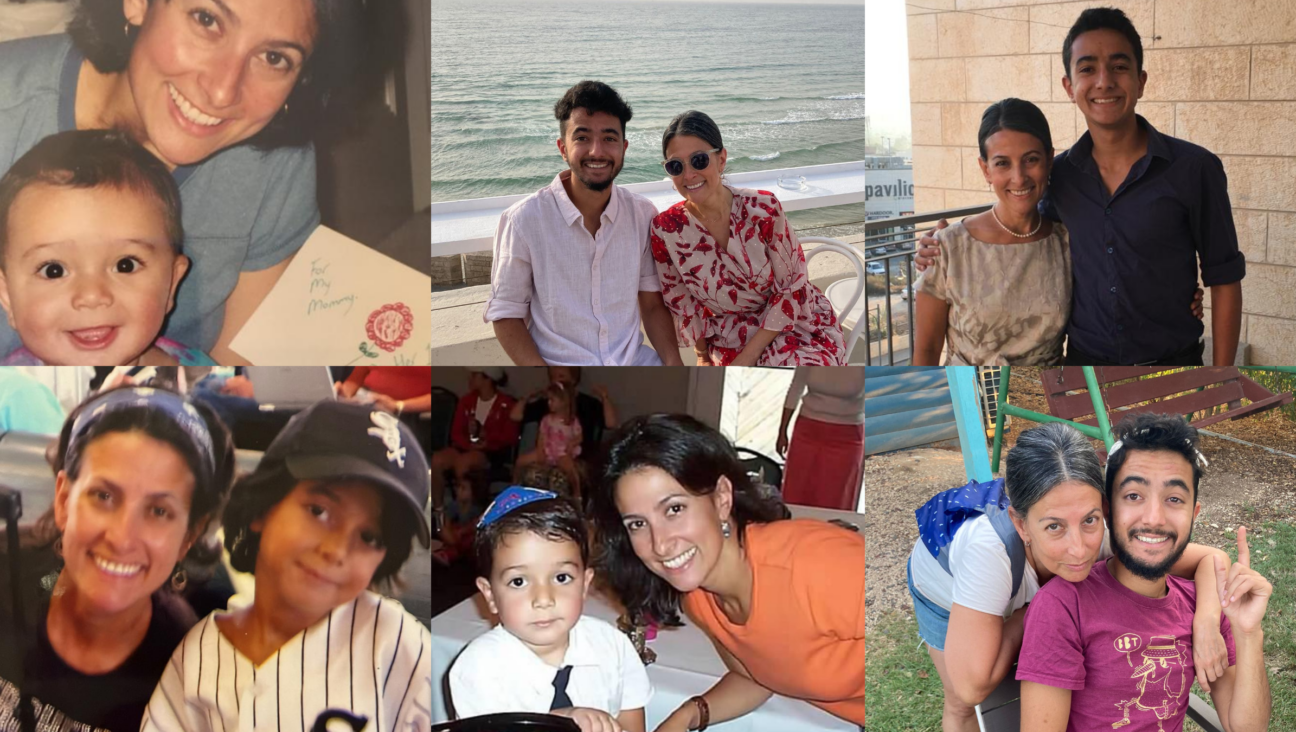7 Secrets of Highly Successful Synagogues — and Churches

Image by kurt hoffman
Less than one-third of American Jews belong to a synagogue, according to the Pew Research Center study of 3,475 Jews. And while a third is nothing to sneeze at, it does leave plenty for the picking.
Ah, but how? While some synagogues are bursting with everyone from babies to bubbes, it’s no secret that others could use some new blood. Are there some surprising ideas for getting folks into synagogue that should be shared? Maybe even some new tactics from our friends with that newer Testament?
I asked Jewish and Christian leaders and consultants for their best congregation aggregation tips. The broad conclusion? People want to be part of something. They long to be moved, they like to be surprised and they love being fed. Once folks feel connected, they are yours. Reach out, try some new ideas and lower the barriers to sampling your synagogue. Good luck!

Image by kurt hoffman
The Schlepping Point: Little Things Make a Difference In Getting Folks to Shul
➊CHUPPAH CHUPPAH HOORAY
Whenever a rabbi from North Shore Congregation Israel, a Reform synagogue in Highland Park, Ill., marries a couple, that couple automatically receives a gift: one year’s free membership.
“The biggest benefit is tickets to the high holiday services,” said Drew Barkley, North Shore’s executive director. “But then they get the bulletin and the emails, too.” As the young (or not so young) couples begin their married life in tandem with hearing about the synagogue, the two intertwine. What’s more, the synagogue deploys one of its rabbis to downtown Chicago, to connect with the young adults who have finished college and moved to the city — for a spell.
“These young professionals eventually are going to get married and move back to the suburbs,” Barkley said, “so [the rabbi] is staying in touch with them.”
Then, of course, if that rabbi marries them — well, the circle begins anew.
TAKEAWAY: Grab potential members on the cusp of adulthood.
➋IT’S A BIG WORLD, AFTER ALL
B’nai Jeshurun, on Manhattan’s Upper West Side, is legendary — so popular, so zesty, so iconic. If it were a food, it would be falafel. But if it were on your FM dial, it would probably be a college radio station — at 2 a.m.
“We are pretty committed to traditional forms of prayer, but within boundaries we have done a lot of experiments and brought a lot of global Jewish music from all sorts of different parts of the world, from Hasidic to Iraqi to Moroccan, to [Shlomo] Carlebach… ” said J. Rolando Matalon one of the three rabbis at B.J.
Along with the global music come the global instruments, “and all those things add up to making things interesting and not predictable,” Matalon said. “I think that one of the reasons for attracting people is that we always try to surprise — not for the sake of surprise, but for the sake of renewal. We have not always succeeded, but we try to keep ourselves fresh.”
TAKEAWAY: Jews are from all over, and so is their music. Don’t limit your repertoire.
➌DUES AND DON’TS
Just a year ago, Temple Beth Am, a Reform synagogue in Jupiter, Fla., had a membership of about 420 families. Now? It’s 500. And all it took was one simple experiment.
“We just eliminated the concept of dues,” said the synagogue’s rabbi, Alon Levkovitz.
As a three-year pilot project, the synagogue committed to not requiring any particular amount of money from anyone.
This has not meant going broke. “We’re very honest with the community, telling them we need money to operate,” Levkovitz said. “At the same time, we said we know there are some who can give more and some less.”
And that’s what has happened. Some give more than the sustaining amount — $1,000 per family — and some can’t swing it. But doesn’t knowing who paid what make a difference to the rabbi?
Levkovitz says no. “There’s only one person at the synagogue who really knows what people give,” he said.
And it’s not him.
TAKEAWAY: Eliminating dues can eliminate a big barrier for a lot of people.
➍SO ASK!
At the Stanton Street Synagogue, in Lower Manhattan, Rabbi Josh Yuter said, “We have our motto, ‘All are welcome.’” That goes for questions, too.
Though the synagogue’s affiliation is Orthodox, “the membership has a wide range of observance. We set it up so that people are free to come as they are and engage as much as they want, and everything will be discussed,” Yuter said. That’s especially true during the part of the Sabbath morning service called “Ask the Rabbi.”
The questions can be about religious law, ethics or current events — as they relate to Judaism. The rabbi’s favorite question was, “Why do we have to listen to the rabbis when it was the rabbis who told us we have to listen to the rabbis?”
TAKEAWAY: Give congregants a chance to ask questions instead of just being lectured at.
➎GOOD SHABBOS, NEBRASKA!
This could be the wildest new idea of all.
At Beth Israel synagogue in Omaha, Neb., an Orthodox congregation, Rabbi John Gross has replaced his pulpit with a desk. On it? A mug. Behind him? A backdrop of the city. Yes, he has turned Saturday morning service into a late-night talk show, complete with an opening monologue, interviews and two schoolgirls holding up “applause” signs.
“It’s phenomenal,” Gross said. Until he did his first talk show service, which was just this past October, the congregation was “getting 70 people on a good Shabbos. This past Shabbos we probably had over 250. People love it!”
What’s more, his operating budget has gone from $5,000 to $75,000 in 15 weeks.
“Onstage” Gross and guest discuss that week’s Torah portion, but Gross makes sure his interviewee has a personal connection to it. For instance, to discuss the Exodus, he invited Boris Gulko, a chess grandmaster who talked about his experience trying to exit the Soviet Union.
Just don’t go searching for “Good Shabbos, Nebraska” videos. There are little teasers, but not whole shows. If there were, the rabbi says, “Everybody would sit in their office and watch it on Monday morning. I don’t care if a Jew in New Jersey sees my synagogue. I want the Jew in Omaha to see it! To come to it!”
That’s exactly what Omaha’s Jews are doing.
TAKEAWAY: Consider different formats for the service. Really different.
➏THIRD DINNER’S A CHARM
Romemu, a Jewish Renewal synagogue on Manhattan’s Upper West Side, is 6 years old and has 500 member families. What’s its secret?
“Many shuls, people will come and join, find there’s no way to connect and disappear,” said Ilene Sameth, Romemu’s executive director. Her synagogue deliberately creates connections by inviting all new members to participate in a three-night orientation program.
Night 1: They go to someone’s home, have dinner, and talk about themselves and about community. Night 2: They are invited to the rabbi’s house for dinner, so they get to know him and his family — and vice versa. Night 3: They meet up at a Friday night service and have dinner afterward, with their coalescing cadre as well as with longer-term members and staff. “The point is to build smaller cohorts within a large and growing community,” Sameth said. “So instead of being faced with being a solo person or family in a large context, you begin to find groups.”
TAKEAWAY: Newcomers will stay if they feel like they’re part of the community.
➐THE WAY TO A CONGREGANT’S HEART
As a human being, a Jew and a rather regular synagogue-goer, allow me to make this final plea: Don’t skimp on the food.
When there’s a nice Kiddush after services (or, at some synagogues, before!), not only does it bring in people, but it also gives them a chance to shmooze. Breaking bread builds community just as surely as dinner at home binds a family. With stomachs rumbling, congregants flee to more welcoming spreads.
Or at least I know one who does. But I suspect I am not alone.
TAKEAWAY: While we may be the people of the book, a little lox never hurt, either.
The 7 Secrets Of Highly Successful Churches
➊ GET BIG OR GET SMALL
Old-school churches have the same issues as synagogues. “About 80%–85%of mainline Christian churches — Methodists, Lutherans and the like — have plateaued or are declining in attendance,” said Don Nations, founder of DNA Coaching, a company that consults with business executives as well as with church leaders.
The congregants still attending seem to be older and whiter than the communities around them, so when young people wander in, they feel out of place. That’s why today, while most churches are still small, the ones that are thriving aren’t. “The majority of Christians attend large churches,” Nations said.
The more mega the church, the more it has to offer: a diverse congregation, a lot of programs for kids, better bands, even better-educated clergy, Nations says. “I’m working with one church of 1,800 that’s grown by 100 or 200 a year for the past 10 years.” What’s it got going on? A rock service in a darkened room with a laser light show, for starters. Nations said that “it also offers awesome children’s services, a great band and a dynamic creative team.”
TAKEAWAY: It’s easier to attract young people if there are young people already there. And it’s easier to attract them with the kind of entertainment they like.
➋INTELLIGENT DESIGN
Architecture and interior design also play a role in bringing in new members. According to Richard Lovelace, a senior vice president at Stellar, an architectural firm that works on a lot of megachurches: “Very seldom do you see pews anymore. Now everybody has their own what I’ll call ‘butt space.’”
What’s more, rooms that can be used by different groups throughout the day surround the theaterlike sanctuary. “For instance, what we refer to as the ‘attic’ in our church is sort of a nightclub,” Lovelace said. “The high school kids use it for an hour, then they go down to services and the middle school swaps in, so there’s a shifting and a reuse of all the space.”
This allows the church to tailor its services — each about one hour — to different age groups. And the rest of their time at the church? It’s social. “In my own church we even have foosball tables,” Lovelace said.
TAKEAWAY: Make your house of worship a community center for kids, and the parents will join. Also: Keep the service short.
➌TWEET JESUS
Everyone’s got a smartphone, but only some churches are smart about using them. So says David Mitroff, founder of Piedmont Avenue Consulting, a full-service marketing company in Oakland, Calif., that consults with businesses and congregations. “Some priests, what they’ll do is say: ‘Hey, everyone, pull out your phone. If you’re on Facebook or Twitter, I encourage you to tweet about what we’re talking about today.’” And suddenly, the congregation is doing your social marketing for you.
“Pictures and videos are huge, so what you also have to do is say: ‘Hey, everyone! Why don’t you take a picture of the food we put out?’” Mitroff said.
The clergy should also be posting, emphasizing the main attractions of the church. If the pastor does a lot of visiting the sick, for instance, he or she should tweet about end-of-life issues. This creates “brand awareness” (if you will) and also serves as a little advertising campaign for the church throughout the week. And if the message is clever or comforting, members can share it, further widening the church’s reach.
TAKEAWAY: A smartphone is your congregation’s friend, not its enemy. Obviously, this tactic won’t work for synagogues that ban electronics on Shabbat.
➍THE DATEBOOK OF MORMON
Mormons have more fun. That’s not necessarily the rap on them, but they really seem to have figured out something great: how to make sure everyone stays connected, in a very nice way.
That’s because each worshipper is assigned two people to visit once a month. “We’re not really grouped by age or interest, but we always find common ground, and a lot of it is just kind of helping each other with family things,” said Pamela Layton McMurtry, an artist, writer and parent of seven in Kaysville, Utah.
On these visits, she’ll bring a plate of cookies, or the two ladies might go out to lunch. Meantime, she’s got two women assigned to her! Recently they helped out with a graduation party. By making sure everyone gets visited on a regular basis, no one falls through the cracks. “That way there’s never anybody homeless, or without a meal. It’s a great safety web,” McMurty said. What’s more, “I read that you need contact once a month to retain relationships.” Keeping loneliness at bay is also a mitzvah — though that’s not the Mormon term.
TAKEAWAY: Regular, guaranteed visits knit a congregation closer together.
➎A REVERENCE FOR RELEVANCE
“We won’t use it Sunday if you can’t use it Monday.” Consultant Nations says that’s the promise the most popular pastors make. Their sermons provide real-world solutions for everyday problems.
Places like the Westside Community Church, in Oregon, go a step further and hand out “action cards” — cards preprinted with an action relevant to that day’s sermon: “I will encourage people with my words,” “I will apologize to a family member” — whatever. Worshippers can check off the box that says “Yes, I’m going to take this next step.”
There’s also space on the card for issues they’d like the pastor to address, or to add the name of a person for whom they’d like prayers said.
Filling out the cards makes it more likely not only that worshippers will try to do the right thing, but also that they’ll come back next week to hear their questions answered or their loved ones blessed.
TAKEAWAY: People want practical guidance and comfort, not just “Bible study.”
➏HAVE A BLAST
Last fall, Christ Universal Temple, in Chicago, gave out free backpacks and school supplies to anyone stopping by. “We had over 4,000 children,” said Aisha Murff spokeswoman for the church. Christ Universal asked for only one thing in return: email addresses.
The bigger your email list, the bigger the chance you’ll have a crowd at your congregation. So throughout the year, Christ Universal does other community-oriented, get-their-emails events, like a Stop the Violence program, or a toiletry drive for shut-ins.
Piedmont Avenue’s Mitroff is also big on email, and stresses that the subject line should never be something lame, like “January Newsletter.” Instead, he suggests writing something like “You’re invited!” or “Here’s Your Free Ticket” — at least they would have some hope of getting opened. But even if they’re not, just seeing regular emails in their inbox helps make congregants feel connected.
TAKEAWAY: Send emails often, and make them intriguing.
➐DON’T JUST PRAY THERE — DO SOMETHING
Organize a beach cleanup. Have a day devoted to filling care packages to send overseas. Make 1,000 peanut butter and jelly sandwiches for the hungry. These events are not just good for the world, they’re good for bringing in young people.
“People under 35 tend to be much more hands-on,” Nations said, so hosting volunteer events is a “key strategy.” What’s more, the young people who already do belong to your congregation find it easier to invite their friends to a day of service than to a church service, period.
TAKEAWAY: To get people through the door, hands-on projects beat preaching.
Lenore Skenazy is a keynote speaker and the author of the book and the blog “Free-Range Kids.”
















